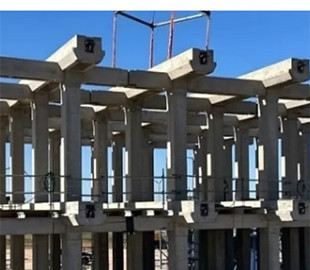
Swiss Energy Vault and Italy's Enel announced plans to build a gravity battery in the US. The project will be the first large-scale gravity energy storage in the country and in the West in general. The capacity of the storage facility will reach 18 MW, and the capacity – 36 MWh. Energy in the battery will be stored in 24-ton blocks raised to a height of 140 meters. Previously, the company's experimental installation in Switzerland demonstrated an efficiency of 75%. In China, such a battery has already been built and was recently connected to the power grid.
In March, Energy Vault completed construction of a similar 25 MW, 100 MWh gravity storage facility in China. In total, nine such installations are planned. The principle is that a computer system with artificial intelligence lifts the 24-ton blocks up to a height of 120 meters using excess energy from renewable sources. When “green” power is not available (at night or during a lull), the blocks are lowered to the ground, driving generators and producing electricity that goes into the grid. The system is able to provide energy storage in the range from two to 12 hours or more.
According to preliminary data, the height of the Energy Vault object in the USA will reach 140 meters. This will allow you to store more energy in a smaller installation. Once operational, the facility will be integrated into the Texas distribution grid managed by the Electric Reliability Council of Texas (ERCOT).
The first 5 MWh Energy Vault pilot plant, previously built in Switzerland, demonstrated efficiency (at ascent and descent) at the level of 75%. The company is confident that they will be able to increase this indicator to 80%. This will make gravity accumulators comparable in efficiency to hydroelectric power plants and battery storage systems.
Operation and maintenance of gravity accumulators is easier and cheaper, and the service life is longer. Composite blocks for this energy storage system can be made using soil from a construction site, industrial waste, and even fiberglass from decommissioned wind turbines.

